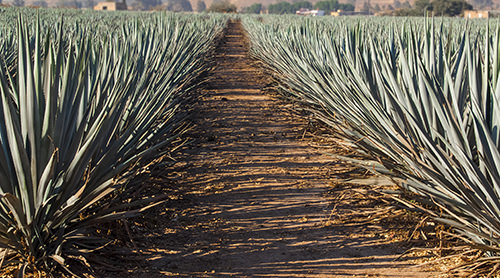Comparing mezcal to sweater vests is actually an unfair comparison. Sweater vests aren’t cool. They’re what you wear when you’re forced to participate in the Model UN, or possibly subpoenaed. Mezcal, on the other hand, is cool—the high octane, desert-smoky but angel-clear spirit of fire-roasted agave hearts (mythically created by a lightning bolt).
Despite all of its intensity, yes, in a way, mezcal can (and should) be the sweater vest of seasonal spirits. When cold weather comes, we adjust our wardrobe accordingly: cardigans, fun knit caps that express our entirely unique personalities (oh hell no, is that chick wearing my same rainbow beanie??), and sweater vests—the inaugural, if Carlton-esque, clothing acknowledgment that cold is coming to attack us, at our core.
Assuming you, like most of us, transition from summer to fall liquor cabinet first (clothes can come later), you’ll be putting your vodkas and tequilas toward the back of the cabinet and pulling darker spirits out to the front—things like Scotch, bourbon, even brandy to cozy up next to the fire (or the Youtube Yule Log fire that serves for now, until we all buy our country estates). There’s good reason we crave darker spirits and wines in colder seasons—food gets heartier, palates get hungrier, and light/citrusy/peppery flavors reasonably go into storage, along with our Jimmy Buffet concert shirts.
 But before you go fully dark, spirits-wise, why not transition with mezcal? (And spare yourself the psychological angst of leap-frogging from bright, citrusy Palomas to rich, dark Manhattans.). Mezcal, like tequila, is made from agave (tequila is actually made from one particular agave plant, Blue Agave, while mezcal can be made from several varieties of agave). Unlike tequila, mezcal is traditionally made by char-roasting the hearts of the agave (aka pinas) in a pit in the ground, and then fermenting and distilling the extracted juice. The result has that vegetal, green, pepperiness and ethereal desert perfume found in great tequilas, but it’s all laced through with tendrils of smoke, like wicked fingertips of peated Scotch sifting through a Mexican desert spirit.
But before you go fully dark, spirits-wise, why not transition with mezcal? (And spare yourself the psychological angst of leap-frogging from bright, citrusy Palomas to rich, dark Manhattans.). Mezcal, like tequila, is made from agave (tequila is actually made from one particular agave plant, Blue Agave, while mezcal can be made from several varieties of agave). Unlike tequila, mezcal is traditionally made by char-roasting the hearts of the agave (aka pinas) in a pit in the ground, and then fermenting and distilling the extracted juice. The result has that vegetal, green, pepperiness and ethereal desert perfume found in great tequilas, but it’s all laced through with tendrils of smoke, like wicked fingertips of peated Scotch sifting through a Mexican desert spirit.
So why is it good for fall, and/or worth a try for mezcal newbies? It’s a bit more expensive, sure, with some entry-level bottles going for $30 to $40. But the stuff you can afford is going to be as nuanced as many spirits, priced much higher. Some mezcals are made within a single village, some are made with wild agave (called Silvestres), and all of them are subject to the same nuances of climate and craft that go into quality Scotches. Not to mention, while grapes grow season to season, Mezcaleros have to wait many years before agave plants are mature enough to work with. Meaning, what they make, they’ll make with serious care.
So before you dive into the dark end of the spirits spectrum, maybe let mezcal have a few weeks this October. Good in cocktails, but also (really) worth sipping on its own. And if you do end up enjoying mescal, thank Ron Cooper. He believed in the stuff when we were all shooting Lemon Drops.

